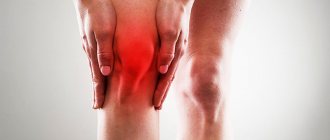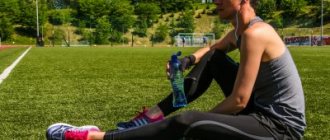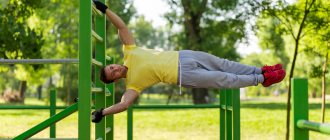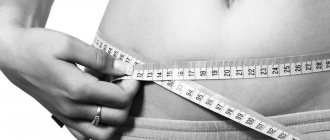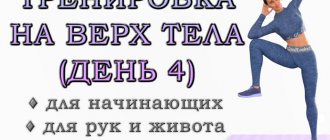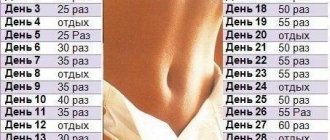Static abdominal exercises are exercises for the abdomen and weight loss, in which the body remains motionless, but the muscles and ligaments still receive a tremendous load, regardless of who performs the exercise: a man or a woman.
Such workouts will help get your stomach in order. It needs to be given special attention, since this is one of the problem areas, especially for women. Statics helps not only tighten the skin and strengthen the abdominal muscles, but also remove sagging and cellulite tubercles (in women), and promotes weight loss.
Benefits of statistical abdominal exercises
Why do many athletes and others choose only static exercises to correct their abdominal muscles?
- The muscles and ligaments of the abdomen are strengthened and developed. The entire exercise is suitable for both men and women.
- When doing statistical exercises, muscles almost do not increase in volume, but their strength increases. Thus, attention is paid to the strength factor of the muscles, which is especially important for men. At the same time, active fat burning occurs in parallel.
- The workouts are simple and accessible. No expensive equipment or special training equipment is required.
- Statistical abdominal exercises allow you to acquire the ideal body. Especially if you combine them with other tasks.
- You can train without interrupting your main activity: watching a movie, reading a book, cooking, working. Especially if you repeat some actions daily.
- It takes little time: a few minutes are enough for one approach.
- Muscle endurance increases and willpower appears. Such training is also used for weight loss.
Anatomy of the press
Abdominal muscles are a serious topic for modern men and women. Before you start looking for a set of exercises for home or sign up for classes with a trainer, you need to at least superficially become familiar with the anatomical features of the area that requires work. The basis that you will need during training is the muscles that make up the abdomen and what they are responsible for. There are four muscle groups:
- Rectus muscle. It completely crosses the tummy (from top to bottom) - it starts from the chest and reaches the crest of the pubic bone. Throughout its entire length, the muscle is divided by one vertical tendon fiber into two parts, as well as several horizontal ones that cross it across. It is because of the tendons that after careful pumping, the so-called “cubes” appear on the stomach. The main purpose of the rectus muscle is to bend the body in the lumbar region.
- External oblique. This is a superficial muscle, starting from the side of the chest, stretches as a continuation of the external muscles of the intercostal space, as if closing the costal part. It is attached by means of special teeth to eight ribs, from which it begins to divide into bundles. The muscle is intended for flexion of the spine and rotation of the torso. If you need to turn to the right, then the left muscle works, when moving to the left, the right muscle is activated. This muscle is the largest of all, therefore it clearly stands out when pumped.
- Internal oblique. It is located immediately under the outer braid. It runs obliquely through the abdomen from the pelvic area to the chest. The muscle fibers run oppositely, or diagonally. Purpose – rotation of the body and turns (to the side where the muscle directly involved in the movement is located).
- Transverse muscle. It lies inside the abdominal region, running horizontally along the sides. It is the basis of the third, deepest muscular layer of the abdomen. When pumping, the transverse muscle does not affect the aesthetics in any way, but it should definitely be worked on. Muscle fiber supports internal organ systems.
The muscle structure of representatives of the female and male halves is no different. Only the size and structure can vary, taking into account the characteristics of the body and human genetics. In some cases, the number of cubes may also vary.
Who can and should do static abdominoplasty?
First of all, this applies to those people who, due to health conditions, cannot do dynamic exercises. Basically, these are those who have suffered ligaments and joints due to injuries and diseases of the spine. The number of movements for them should be limited.
Classes are also suitable for people whose work involves a lack of physical activity: managers and office workers. Simple tasks can be done during working hours. The technique is very simple and helps strengthen the abdominal muscles, normalizes blood flow, and serves as a good antidepressant.
Contraindications
- Infectious diseases;
- increased body temperature;
- recent surgeries;
- any problems with the musculoskeletal system;
- ailments (headache, increased blood pressure);
- pregnancy;
- obesity of any stage.
If you have any health problems, it is better to consult with your doctor in advance about the possibility of such training. If there are no specific diseases, but you have doubts, approach the coach with questions.
During menstruation, girls are not prohibited from exercising if the discharge is not too heavy and there is no pain. But the intensity of the exercises should be significantly reduced.
Several features of statics for the abdomen in men and women
When starting static exercises for the abdomen, it is important to know the features of such exercises in order to perform them correctly and not harm your health.
- For patients with heart problems or vascular diseases, reduce the load. It is advisable that the training course be selected by a specialist. The same applies to those who are trying to lose weight.
- A good addition to statics are exercises that will help improve body flexibility and abdominal firmness. If you want to regulate muscle volume and body contour, you can use dynamic exercises.
- Statics can be performed in the form of circuit training.
- Static training can be done at home without using additional equipment or devices.
- The achieved result depends on the load on the abdominal muscles. This is especially true for losing weight. To reduce your waist size and improve muscle tone, it is enough to do half-hearted training. Training at full capacity will help make your abdominal muscles strong and voluminous.
- During training, it is important not to overdo the load on the body. This can lead to problems with the heart and blood vessels, and impaired blood flow.
- Tasks can be selected depending on your training experience and muscle strength.
- After training your abdomen, it is better to do muscle stretching exercises and breathing exercises.
"Scissors"
- We take a horizontal position. We extend our arms along the body and place our palms on the surface.
- Bend your knees at an angle of 45 degrees. We pull towards the chest. This will make it easier to do the abdominal exercise at first.
- Then we raise both legs as high as possible while simultaneously tensing the abdominal area. Your lower back should remain stationary on the floor.
- Smoothly, slowly, lower your left leg first. We lower it as much as possible – there should be no more than a few centimeters left before touching.
- Returning the left leg, we begin to lower the right (at the same time).
The most popular static abdominal exercises
The 4 most effective and popular static simple abdominal exercises: their advantages, difficulties and the essence of the exercise.
Legs hanging
- Benefits: One of the most effective static exercises. There are many variations of its execution, but the “law” is important for everyone: it’s better when it’s harder. When performing the exercise, the entire abs are worked out, but the main attention is paid to the lower abs.
- Difficulties: It is very difficult for beginners to do it, since the stomach is pumped up much slower than the abs are pumped up. If there has been no frequent physical activity before, the heart rate rises very quickly, which can negatively affect the health of people with high blood pressure and older people who are unprepared for physical activity.
- The essence of the exercise: To perform this static workout, you need to go to the horizontal bar and hang on it. Use a straight grip and tighten your stomach. Arms should be straight, shoulder width apart. In the starting position, your legs should be straight, you can slightly tilt them back. Having fixed this position, you need to inhale and hold your breath, and begin to gradually raise your legs to an angle of 90°. Having reached the desired angle, you should stay in this position for a couple of seconds. After this, slowly and gradually return the legs to the starting position. Repeat the exercise the required number of times. Most often performed by men.
Forward twist
- Benefits: Works the upper abs well. It can be performed in any position: lying on the floor, on a bench, or using a special exercise machine (you can do exercises with a greater load on it). The number of repetitions in this case is up to 15, approaches – up to 6.
- Difficulties: It is prohibited for people who have prolapsed internal organs. This is due to the fact that the exercises are performed mainly in a sitting position, which can further aggravate the situation.
- Essence: Lie on the floor or other selected surface. Legs bent at the knees, feet on the floor. Place your hands behind your ears and bend your elbows. Inhaling air, the body lifts off the floor and rises, while twisting occurs. At the highest point, stop for a few seconds and smoothly lower to the starting position. If you want to complicate the exercise, you should not bend your legs at the knees, but lift them up. In this case, twisting is carried out only with raised legs. For greater stability, you can use a fitball. There are several twisting techniques: overhead with arms, double twist, oblique twist, side or reverse twist, and other types. All of them contribute to weight loss.
Holding static tension with your stomach
- Advantages: There are many options for implementation (both with and without support). When performing static exercises, the deep abdominal muscles are used, so weight loss occurs primarily in this area.
- Difficulties: You definitely need backup if you have never done static balance exercises until your body gets used to the load. The training will not give any effect and will be difficult to perform if you do not adhere to proper breathing.
Plank
- Take a lying position, bend your elbows, and rest on the floor. This position is maintained for 50-60 seconds.
This is just a small part of static exercises that will help put your figure (especially in the abdominal area) in order and contribute to faster weight loss. In order to achieve the desired result, both men and women only need to complete at least a few of them in a timely manner. Properly selected tasks, correct execution and a little perseverance will very quickly help you acquire the figure of your dreams.
The article was checked and approved by Yulia Igorevna Mosalova, a specialist in adaptive physical culture - see the authors of the site
- 1
- 1
How to properly train a woman's abs
What is the secret to a beautiful belly? The answer is obvious - constant training, statics and proper nutrition. This applies to representatives of the fair half who are far from big sports and engage in it solely for their health. Here are some useful tips that will make the process of working out the abdominal area much more effective:
- It is advisable to do abdominal exercises for women in the format of supersets, consisting of several elements, at a slow pace in one approach. This way the load will be distributed evenly and the white muscle fibers will not grow rapidly. As a result, the tummy is well pumped up, but remains flat.
- We definitely include static tension in the training process. It involves short pauses at the maximum point of each exercise.
- We pay special attention to breathing. Maximum muscle fiber contraction occurs with full exhalation. To increase efficiency, it is necessary to achieve a greater range of motion.
Note. Before training, be sure to study video lessons from famous instructors. Let's look at each exercise step by step.
- To pump up the abs, a woman only needs one lesson weekly. All other workouts must be devoted to other muscle groups, not forgetting about cardio training.
Crunches
Exercise 7. Reverse crunches
Lie on your back on a flat surface. There should be something next to your head that you can grab onto with your hands. Table leg, sofa, exercise machine stand. Press your lower back to the floor. Bend your knees slightly. Raise your hips. As you exhale, twist your pelvis and bring your knees toward your chest, slightly helping yourself with your shoulder girdle. Pause for a second. As you exhale, return to the starting position (hereinafter referred to as IP).
Exercise 8. Double crunches
Lie on your back on a flat surface. Press your lower back to the floor. Close your hands at the back of your head. Elbows are spread out to the sides as much as possible. Bend your knees slightly. Raise your hips. As you exhale, with a jerking movement, simultaneously lift both the upper part of the body and the legs and pelvis, lifting the feet off the floor. Bring them as close to each other as possible. Pause for a second. As you exhale, return to the starting point.
Exercise 9. Lateral (oblique) twists
Lie on your back on a flat surface. Press your lower back to the floor. Bend your knees at the most acute angle so that your feet are as close to your pelvis as possible. The right hand is placed behind the head, the left hand lies on the stomach or extended along the body. Bend both knees to the left so that your lower leg touches the floor. You can tear off the body a little. As you exhale, twist the right side of your body to the left, towards your bent legs. Only the head and shoulder blades are torn off. Fix at the highest point for a second. As you exhale, return to IP. Perform the required number of repetitions. Do the same for the second side.


